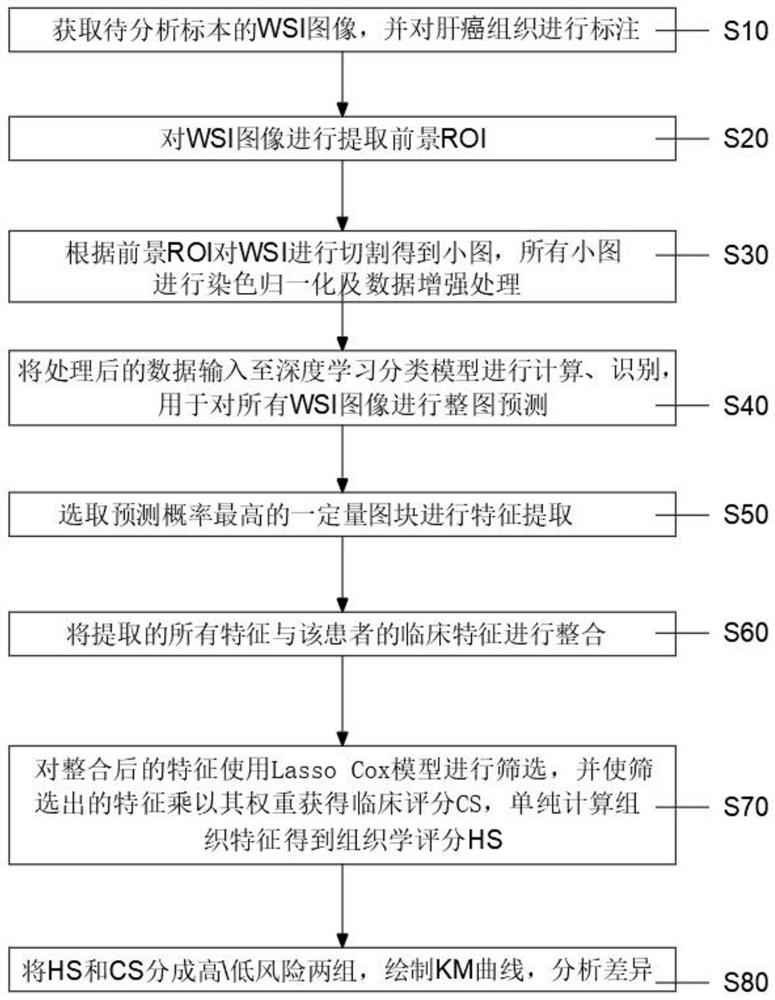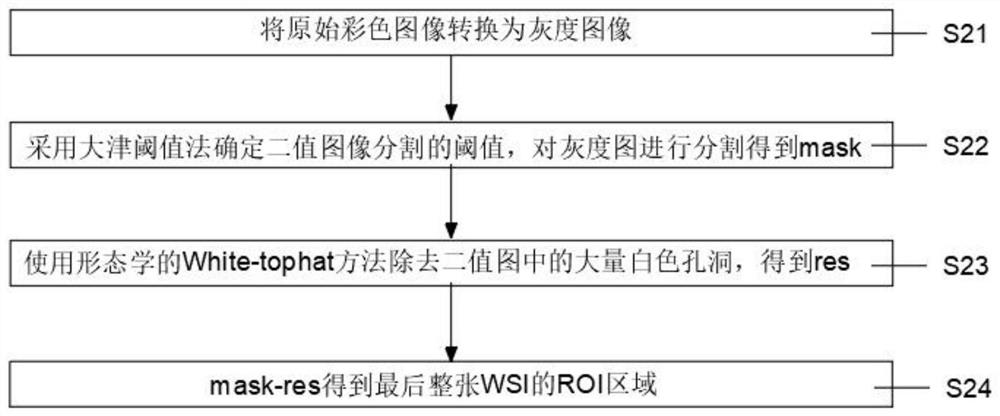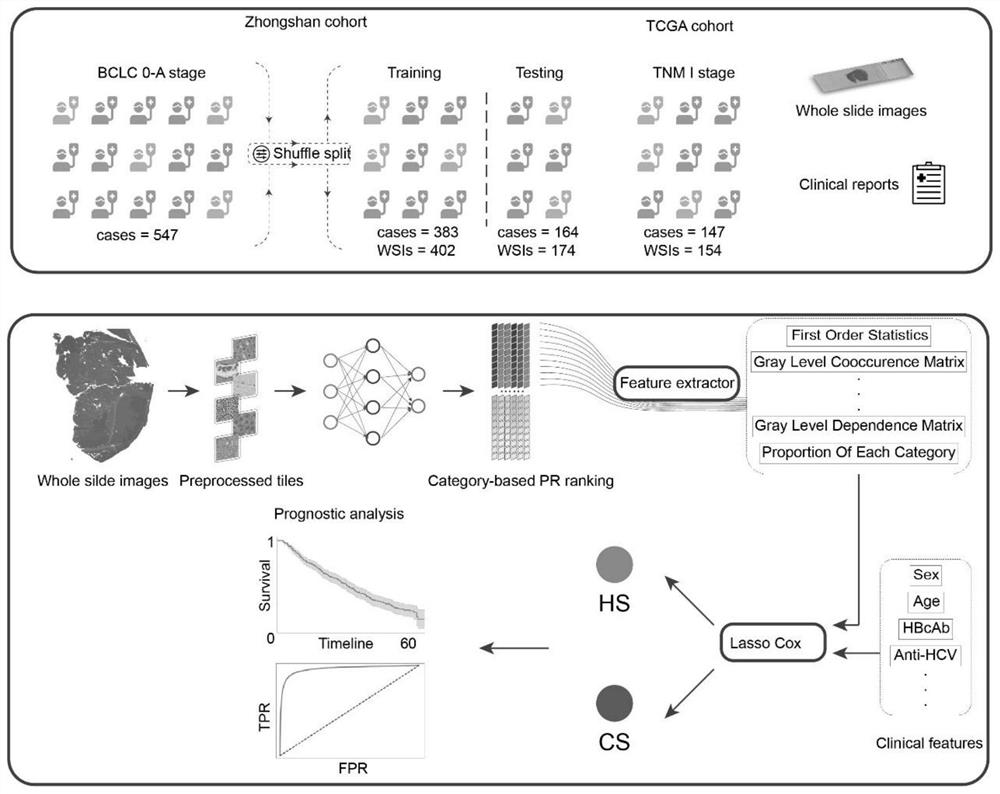Analysis method and system for early hepatocellular carcinoma postoperative recurrence prognosis based on artificial intelligence (AI)
A technology of hepatocellular carcinoma and analysis method, applied in the field of intelligent algorithm for prognosis, can solve the problems of normalization of pathological slices, reducing model efficiency, affecting model promotion, etc., to achieve the effect of improving prediction accuracy, reducing manpower and material resources, and high accuracy
- Summary
- Abstract
- Description
- Claims
- Application Information
AI Technical Summary
Problems solved by technology
Method used
Image
Examples
Embodiment
[0056] On the one hand, the present invention provides an AI-based analysis method for postoperative recurrence and prognosis of early hepatocellular carcinoma, which predicts postoperative recurrence risk and prognosis of early hepatocellular carcinoma through complete digital HE-stained histopathological sections. figure 1 , the specific steps are:
[0057] S10. Obtain the WSI image of the specimen to be analyzed, which is all HCC specimens; then select a small amount of WSI and use APSP software to analyze 6 types of liver cancer tissues: tumor area, normal liver tissue adjacent to cancer, fibrosis area, portal area, and lymphocyte aggregation The areas of hemorrhage and necrosis were manually marked.
[0058] S20. Extracting a foreground ROI from the WSI image;
[0059] S30. Cut the WSI according to the foreground ROI to obtain small images, and perform coloring normalization and data enhancement processing on all the small images;
[0060] S40. Input the processed data ...
PUM
 Login to View More
Login to View More Abstract
Description
Claims
Application Information
 Login to View More
Login to View More - R&D
- Intellectual Property
- Life Sciences
- Materials
- Tech Scout
- Unparalleled Data Quality
- Higher Quality Content
- 60% Fewer Hallucinations
Browse by: Latest US Patents, China's latest patents, Technical Efficacy Thesaurus, Application Domain, Technology Topic, Popular Technical Reports.
© 2025 PatSnap. All rights reserved.Legal|Privacy policy|Modern Slavery Act Transparency Statement|Sitemap|About US| Contact US: help@patsnap.com



